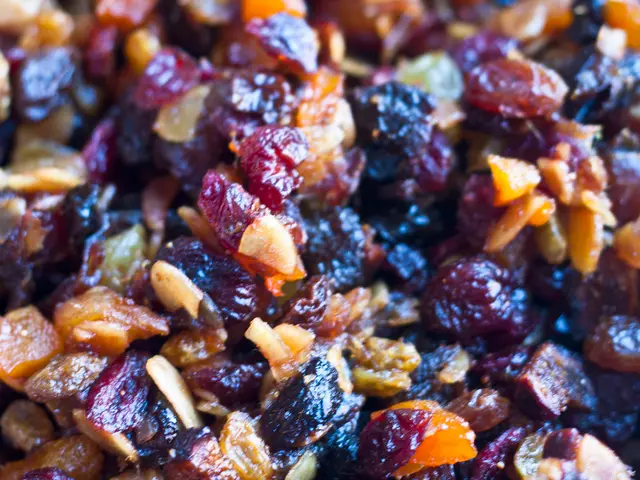Principles of Symmetrical Layout in Sustainable Gardening (Permaculture)
In the pursuit of a greener and more sustainable world, permaculture circular design is gaining traction as a powerful tool for creating thriving ecosystems. This innovative approach combines sustainable landscaping and regenerative agriculture to foster resilient and productive systems.
At the heart of permaculture is the concept of a zero-waste garden, where resources are reused and recycled, minimising waste and boosting sustainability. This is achieved by creating systems where materials are repurposed, requiring less outside help.
Improved soil health is another significant benefit of permaculture circular design. Techniques such as composting and cover cropping help enhance soil fertility, promoting healthier plants and reducing the need for chemical fertilisers. Composting food scraps, for instance, can enrich garden nutrient levels and cut down on waste. The Bokashi composting system even turns cooked food waste into a valuable soil enhancer.
Water management is crucial in permaculture circular design. Methods like water-wise gardening and buried ollas help reduce water waste, while techniques such as rainwater harvesting and swale creation help conserve this precious resource.
Energy efficiency is another focus in permaculture. Techniques like passive solar gain and the use of renewable energy sources help cut down energy consumption, making these systems more sustainable.
Biodiversity is key in permaculture circular design as it makes ecosystems more resilient and productive. Saving and exchanging seeds helps preserve biodiversity and cuts down on food waste. Repurposing items for gardening also promotes creativity and reduces waste.
The GOBRADIME design process is a structured methodology used in permaculture to create efficient and environmentally friendly spaces. This stepwise approach emphasises thorough site understanding, resourcefulness, and adaptive management. The nine essential steps in the GOBRADIME process are: Gather information, Observe, Boundaries, Resources, Analyse and assess, Design, Implement, Maintain, and Evaluate.
Permaculture circular design can be applied in a variety of settings, from small gardens to large landscapes. Buying local produce reduces wasteful packaging and carbon footprint, while urban agriculture and circular design can save time and money, and increase efficiency.
Adopting strategies like implementing closed-loop systems, using renewable energy, and creating diverse ecosystems helps make a system that's good for the planet and people. Educating and collaborating with the community is essential for the success of circular design.
Regular monitoring and maintenance are essential for the ongoing success of a permaculture design. With these practices, we can reduce waste, create closed-loop systems, and contribute to a greener, more sustainable world.
- Permaculture circular design, with its focus on zero-waste gardening, seeks to reuse and recycle resources, minimizing waste and boosting sustainability.
- Enhanced soil health is a key benefit of permaculture, achieved through techniques like composting and cover cropping to promote healthier plants and reduce chemical fertilizer use.
- Composting food scraps enriches garden nutrient levels, cuts down on waste, and can be elevated with Bokashi composting to turn cooked food waste into a valuable soil enhancer.
- Water management is critical in permaculture, with methods like water-wise gardening, buried ollas, rainwater harvesting, and swale creation helping reduce water waste and conserve this precious resource.
- Energy efficiency is another central concern in permaculture, addressed through techniques like passive solar gain and renewable energy use to reduce energy consumption and make systems more sustainable.
- Biodiversity is essential for resilient and productive ecosystems in permaculture, promoted through seed saving, repurposing items, and maintaining diverse species in gardens.
- The GOBRADIME design process, a structured methodology in permaculture, emphasizes site understanding, resourcefulness, and adaptive management, guiding the creation of efficient and environmentally-friendly spaces.
- Permaculture's principles can be applied in various settings, from small gardens to large landscapes, and buying local produce reduces packaging waste and carbon footprint while promoting urban agriculture and circular design.
- Embracing strategies such as closed-loop systems, renewable energy use, and diverse ecosystems creates a system that benefits the planet and people.
- Collaborating and educating with the community is vital for the success of circular design in promoting a greener and more sustainable world.
- Ongoing monitoring and maintenance are essential for the long-term success of permaculture designs, enabling us to reduce waste, create closed-loop systems, and contribute to a greener, more sustainable planet.
- In the realm of health-and-wellness, fitness-and-exercise, food-and-drink, home-and-garden, sustainable-living, environmental-science, fashion-and-beauty, and lifestyle, adopting permaculture principles contributes to a holistic approach to living that addresses climate change, fosters biodiversity, and supports sustainability.




